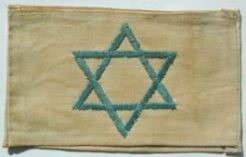This is one of the hardest photos we’ve restored and colored, and perhaps one of the most necessary.
These two men are showing their liberators what their work was like as part of the Sonderkommando at Dachau camp. But what was the Sonderkommando?
Thread:
These two men are showing their liberators what their work was like as part of the Sonderkommando at Dachau camp. But what was the Sonderkommando?
Thread:

To start, this photo is part of a series of documents taken by an American doctor: Gilbert R. Di Loreto.
He accompanied the troops and took chilling photos of the inside of Dachau, the first Nazi camp (opened in 1933).


He accompanied the troops and took chilling photos of the inside of Dachau, the first Nazi camp (opened in 1933).


Four of them are dedicated to the Sonderkommando (Special Command). I only colored one back then.
The Sonderkommando were prisoners forced to work in the extermination areas of each camp: the ovens and the infamous gas chambers.
The Sonderkommando were prisoners forced to work in the extermination areas of each camp: the ovens and the infamous gas chambers.

While not all camps were extermination camps (in fact, there were only 6), all had areas to dispose of bodies.
Many camps also had (or added) at least one gas chamber. Dachau was one of these.
Many camps also had (or added) at least one gas chamber. Dachau was one of these.
The work of the Sonderkommando wasn't the hardest physically, but it was one of the most psychologically grueling.
They had to enter the gas chambers after each execution and carry the hundreds of bodies to the crematoriums.
They had to enter the gas chambers after each execution and carry the hundreds of bodies to the crematoriums.

They also had to cremate the bodies of those who died due to the inhumane conditions in the camp.
Since they knew more about the camps’ operations, the Nazis often replaced them by killing the previous group.
Since they knew more about the camps’ operations, the Nazis often replaced them by killing the previous group.
Despite this, in Auschwitz, they managed to secretly take some photographs.
They also organized a revolt. With the help of some prisoners working outside, they stole dynamite and blew up one of the crematoriums.
They also organized a revolt. With the help of some prisoners working outside, they stole dynamite and blew up one of the crematoriums.

Filip Müller was one of the few Sonderkommando members who survived. He worked in Auschwitz and Auschwitz II (Birkenau), and testified in the Frankfurt Auschwitz Trials.
Henryk Mandelbaum also worked in the Sonderkommando.


Henryk Mandelbaum also worked in the Sonderkommando.


The Sonderkommando members recounted details about their work that make it even more macabre. They had to sort bodies by size to ensure they burned better.
According to Di Loreto’s notes, each oven was designed for one body.
However, as bodies piled up and due to the extreme thinness of prisoners, they managed to fit up to four at a time.
However, as bodies piled up and due to the extreme thinness of prisoners, they managed to fit up to four at a time.

They also mentioned that because the prisoners were so thin, their bodies had little fat and didn't burn well. So they sometimes had to add fuel to help burn them.
In Auschwitz, prisoners had to go down to an underground room and undress. Turning right, they entered the gas chamber.
After execution, the Sonderkommando took the bodies to a lift and transported them to the floor with the ovens.
After execution, the Sonderkommando took the bodies to a lift and transported them to the floor with the ovens.
In theory, the buildings had an area where bodies were left before being incinerated. However, accumulation often caused them to pile up outside.
Another photo secretly taken by the Sonderkommando
Another photo secretly taken by the Sonderkommando

This is why, upon arrival, the liberators saw scenes like this. They simply couldn’t keep up.
In Treblinka, an exclusively extermination camp, they had cremation pits besides ovens.
They dug a hole and burned bodies in the open air.
In Treblinka, an exclusively extermination camp, they had cremation pits besides ovens.
They dug a hole and burned bodies in the open air.

In Bergen-Belsen, although not an extermination camp and without a gas chamber, they also had to open massive mass graves to dispose of bodies.
The images of the camp upon the liberators' arrival were horrific.
The images of the camp upon the liberators' arrival were horrific.

To give you an idea: In Auschwitz, in just 4.5 years of operation, 1,100,000 people were murdered.
In Treblinka, a pure extermination camp, open for about 3 years, 800,000 prisoners were massacred.
Photo: Prisoners from Ampfing
In Treblinka, a pure extermination camp, open for about 3 years, 800,000 prisoners were massacred.
Photo: Prisoners from Ampfing

Other non-extermination camps also had shocking numbers.
In Bergen-Belsen, which had no gas chambers, 50,000 people died in just under 2 years, many from epidemics caused by living conditions.
In Bergen-Belsen, which had no gas chambers, 50,000 people died in just under 2 years, many from epidemics caused by living conditions.

The testimonies of Sonderkommando prisoners were crucial in judging Nazi crimes. In Auschwitz, they managed to write notes and hide them under the barrack floorboards.
110 Sonderkommando workers survived Auschwitz.
110 Sonderkommando workers survived Auschwitz.
And that's the thread for today. Sorry for the harshness, but it's necessary sometimes. RT the first tweet if you found it interesting and follow us if you support this account.
See you next time.
See you next time.

• • •
Missing some Tweet in this thread? You can try to
force a refresh



















